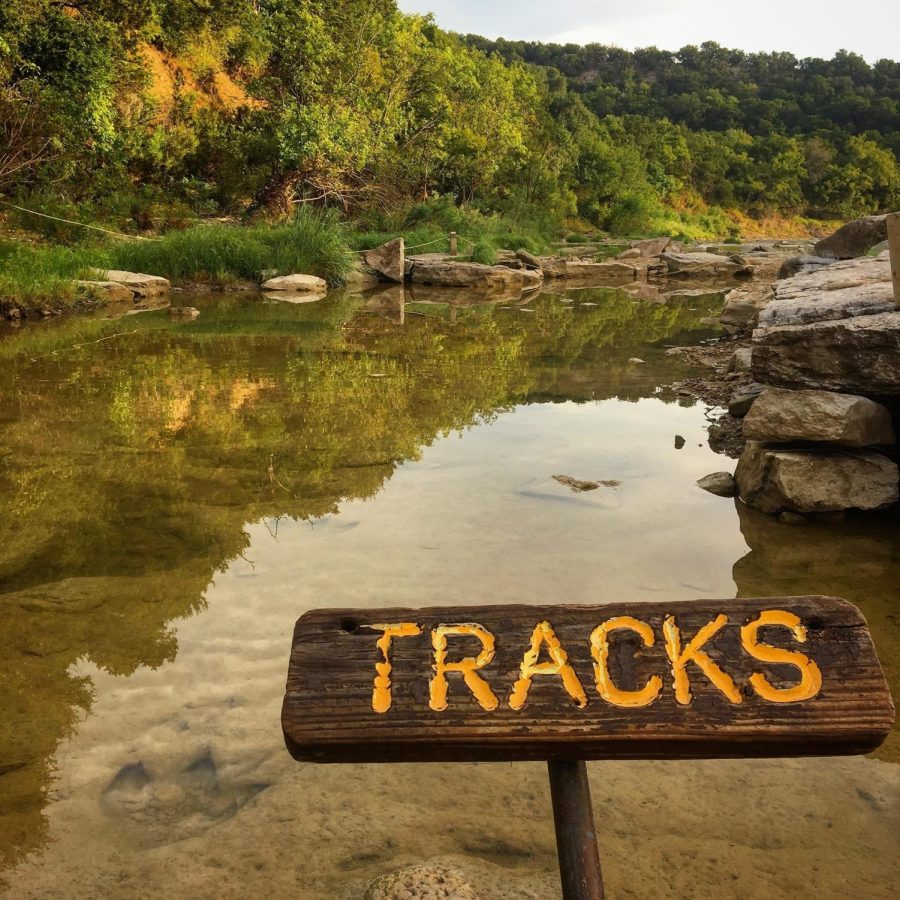During the Cretaceous period, the Earth was a warm, swampy, two-continent planet dotted by shallow inland seas and dominated by dinosaurs.
Among these dinosaurs was the massive Acrocanthosaurus, an intimidating creature that once roamed North Texas, standing about 15 feet tall and weighing a staggering 7 tons as an adult.
Since the Cretaceous period, over 113 million years ago, traces of these ancient ancestors have been found in well-preserved spots around the world.
On Aug. 17, a discovery was made in Dinosaur Valley State Park, southwest of DFW. Dinosaur tracks belonging to an Acrocanthosaurus, the biggest theropod to ever roam North Texas and one of the two dinosaurs that make up most of the tracks in the park, were discovered in the Paluxy Riverbed.
“These Texas dinosaur tracks were exposed by dropping water levels, a consequence of [the summer] drought,” professor of Geology and Director of Paleontology from Utah Tech University Jerry Harris said.
Jeff Davis, the Park Superintendent at Dinosaur Valley, emphasized the importance of the drought, even though the tracks have since been covered with recent rainfall.
“The tracks have been generally uncovered throughout the summer as the river dried up,” Davis said. “Once the river got low enough, track experts and volunteers came in and started clearing the silt, gravel, and sediment off of them.”
Because uncovering dinosaur tracks is a tedious process that requires scientists to be precise in their recordings, there are often cases of misidentification.
“…We can only make educated assessments on most aspects of those long-extinct species,” Ph.D. Ronald S. Tykoski, Director of Paleontology at the Perot Museum, said. “There are untold numbers of species of extinct animals out there in the fossil record, and most of them are not dinosaurs.”
While the discovery is major for Harris and the state park, he says some observers view tracks as less exciting than body skeletons, although the tracks can tell just as much, if not more, about the specimen’s behaviors.
“Body fossils are, for lack of a better word, [are] ‘sexier’ than trace fossils as people prefer to see skeletons in museums,” Harris said.
Harris explains that trace fossils are created by organisms’ bodies and behaviors, such as tracks, burrows, and nests. Trace fossils are much more common than body fossils because a creature can only leave behind one skeleton in its life, even though it can leave many tracks.
“Trace fossils don’t tell everything about behavior, but they can certainly give information about such things as stance and speed,” Harris said. “If they occur with lots of other tracks, it can reveal group behaviors. A few tracks have even been proposed to document dinosaurs hunting and even engaging in mating dances.”
Harris hopes the discovery of these tracks will lead to more findings and additions to the database of knowledge.
“Just because the Acrocanthosaurus is the only big meat-eater known in that area at that time doesn’t mean it was the only one,” Harris said. “Maybe a still undiscovered dinosaur made the tracks.”




